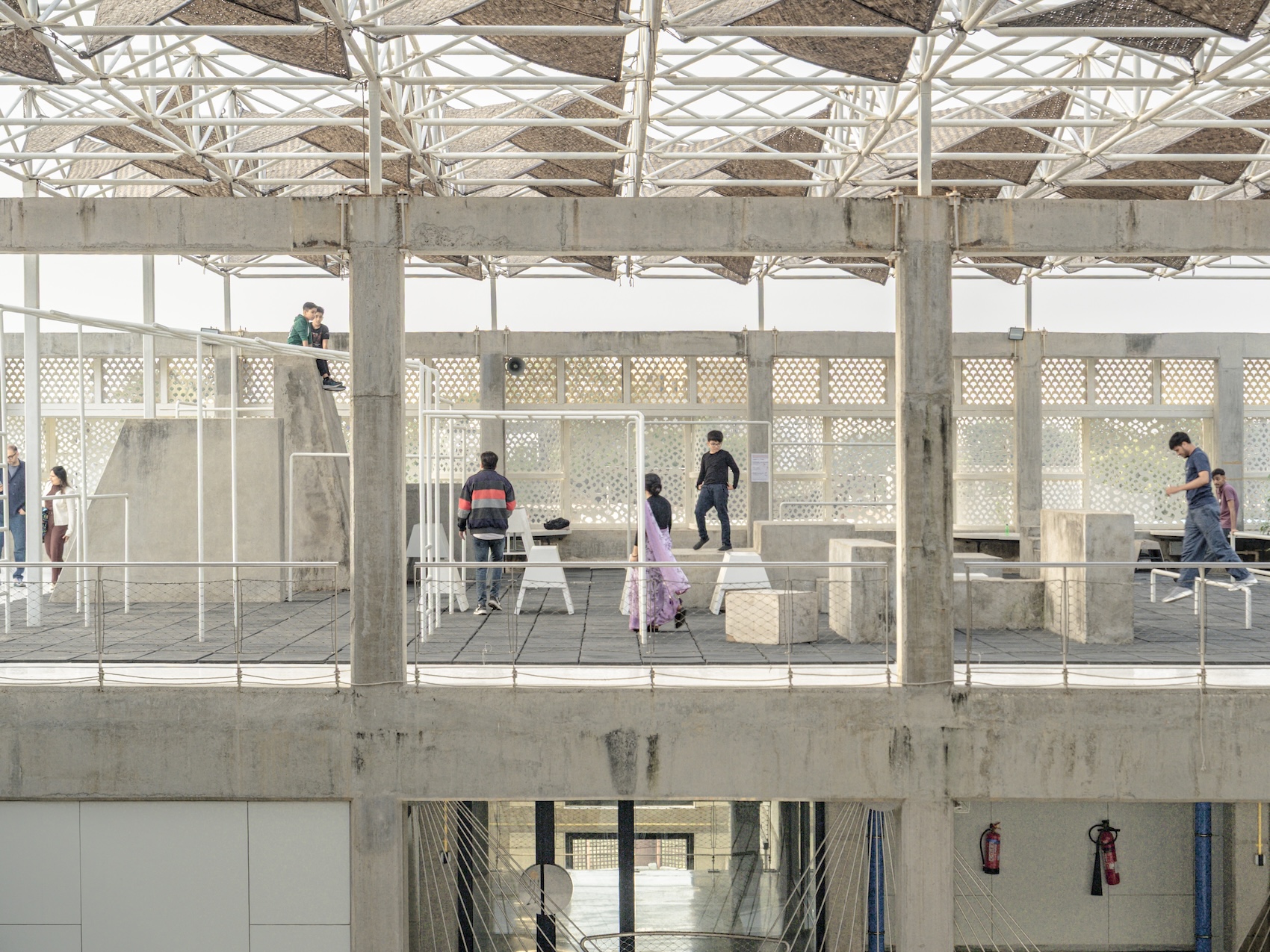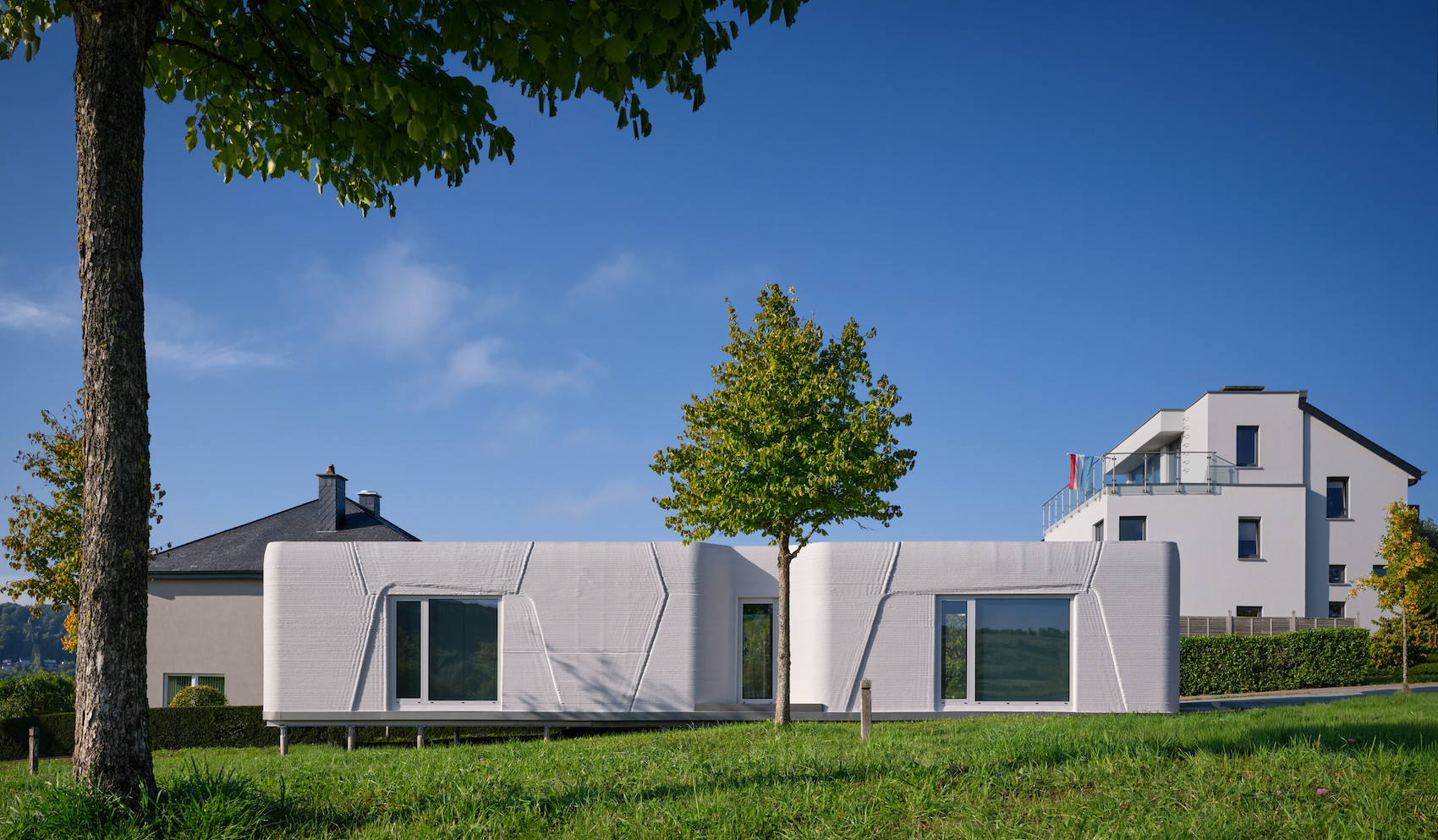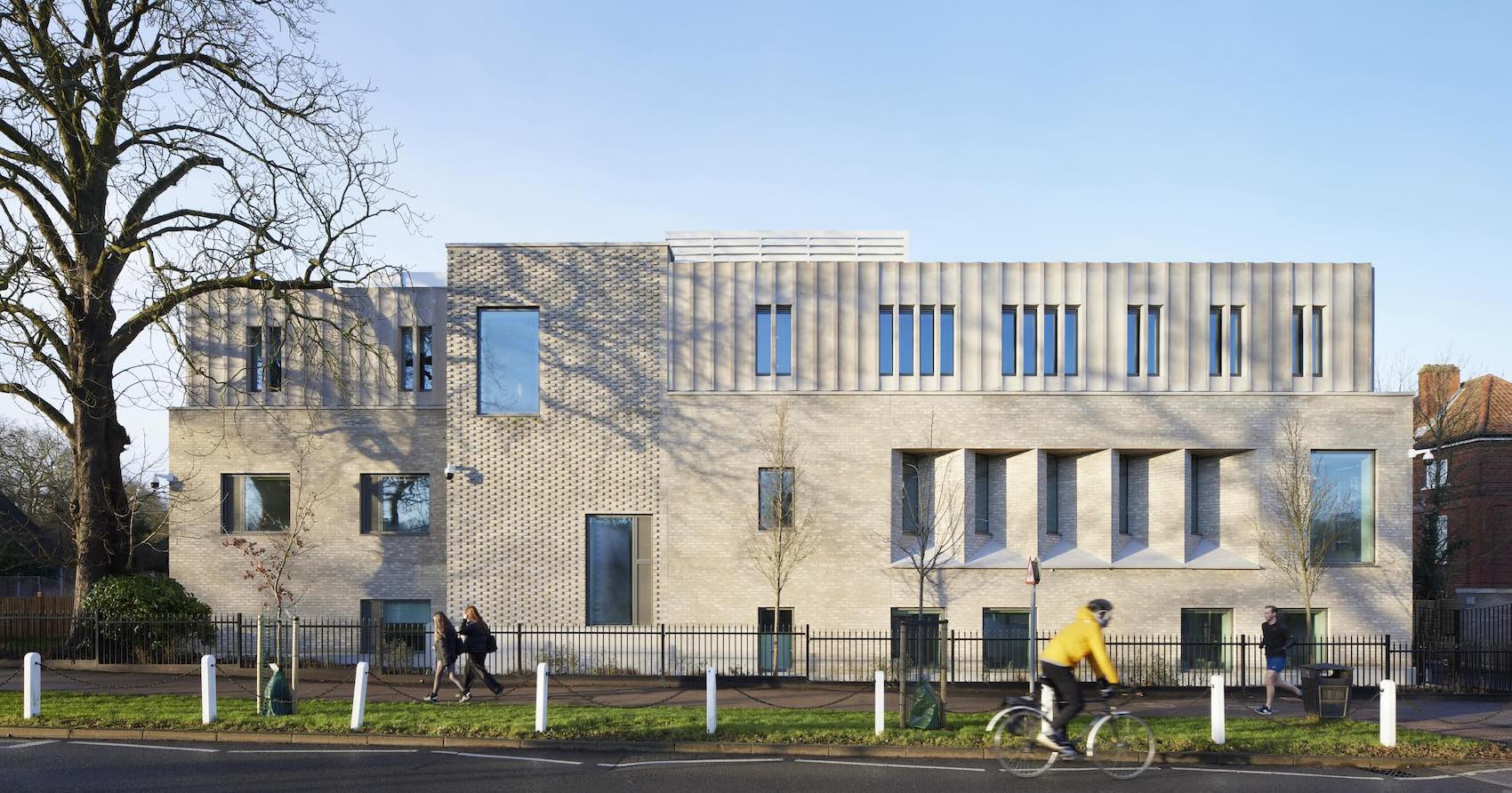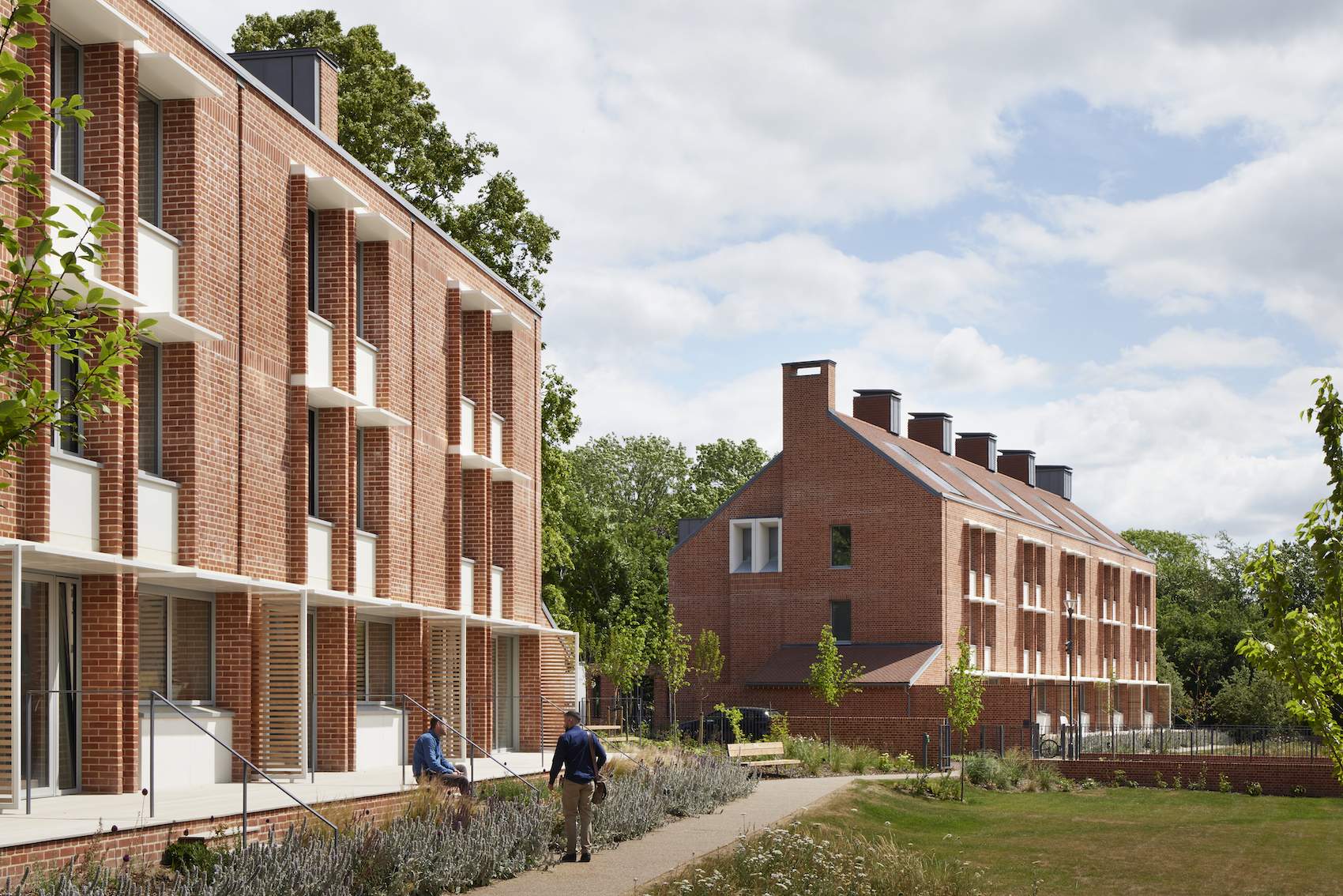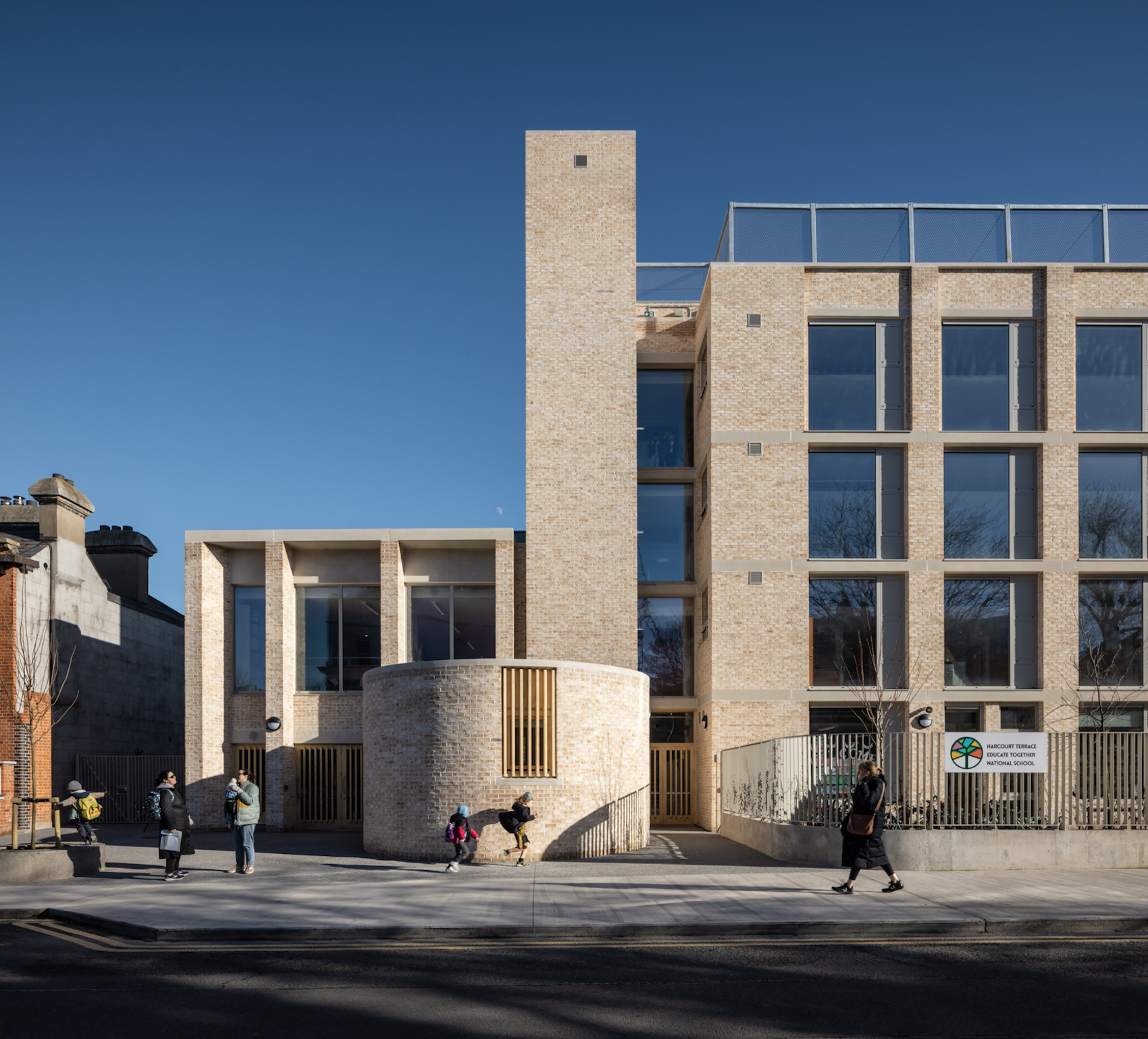Bespoke brickwork is used to striking effect on a mixed-used project in London by Bureau de Change
Designed by Bureau de Change, The Interlock is a five-storey mixed-use development in London’s Fitzrovia. Located on Riding House Street, the five-storey building comprises three residential units, a street-level cafe and a basement gallery.
Riding House Street hosts an extraordinary breadth of architectural styles, from John Nash’s All Souls church to post-war commercial buildings, concrete slab structures and twentieth-century apartment blocks, says the architect. Brickwork unifies the street’s piecemeal aesthetic and serves as the facade material of choice. The project takes the proportions of the neighbouring nineteenth-century terrace, recasting its brick facade as a building of uncertain heritage – one that is simultaneously historic and contemporary, familiar yet foreign.
Eschewing the traditional dimensions of London bricks, the architect has developed a collection of 44 misshapen and seemingly unstackable clay blocks. “We were interested in taking these very traditional proportions and in some way subverting them – like a puzzle box that seems familiar and reveals a hidden complexity that increases the more you interact with it”, explains Bureau de Change director of Katerina Dionysopoulou.
Basement, ground, first, second, third, and fourth-floor plans; section
The patterns visible across the surface of the facade are informed in part by the interactions between materials and structure. The bricks appear to lap up against the glazing, swell and bow between floors, and are inset frame-like to denote the building’s perimeter. For passers-by, the bricks appear to morph and twist like cogs. The facade was modelled in 3D to ensure that each facet met the structural and fabrication requirements without diluting the integrity of the surface form.
Staffordshire Blue Clay was chosen as a contrast to the street’s predominant London brickwork. The marl clay was set into 14 handcrafted steel molds and fired in oxidation to create the matt blue finish. After firing, the 14 ‘parent’ bricks were divided to form 30 ‘offspring’ products. The fabrication team used 1:1 printed templates that set out the number, typology and location of each brick. In total, 188 templates were used to construct the building.
“We worked iteratively with the team at Forterra, adapting and reviewing the bricks in 3D”, says fellow Bureau de Change director Billy Mavropoulos. “We were walking the line of what is technically possible, but through the process, found a point that was both buildable and produced the richness and movement we were trying to achieve.”
The regularity of the facade’s proportion and fenestration belies the complexity of the scheme’s volume and massing. At the rear, the building is organised as a series of stacked boxes of varying form and size. Each floor is shallower than the last, with the deepest floorplan at the bottom and the smallest at the top. Within the stepped form are a series of deep lightwells and skylights that track daylight into the centre and edges of the building.
Inside, the residential units feature terrazzo bathrooms, natural stone worktops, sprayed-timber kitchens and oak floors. The light-filled cafe at the base of the building serves as a counterpoint to the weight and ‘inkiness’ of the facade. With every surface washed in white, the heavy-set mullions are halved and extruded from their frames to form ribbons that curve and fold over the ceiling in a style reminiscent of ornamental plasterwork. The mono- chromatic palette is broken only by cuts of oak that line the floor and counter tops.
Additional Images
Credits
Architect
Bureau de Change
Structural engineer
HRW
Services engineer
MWL Group
Client
HGG London
































